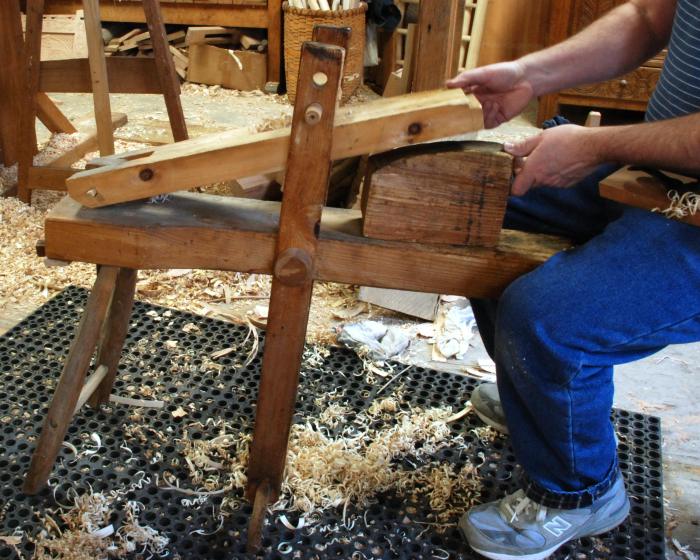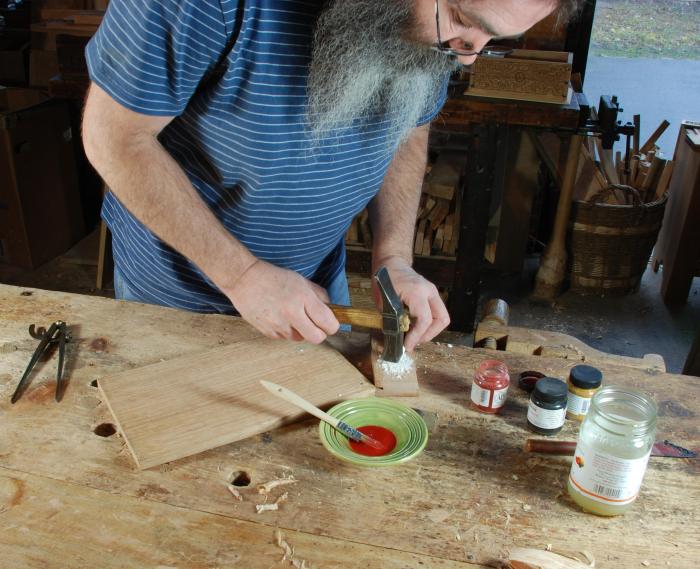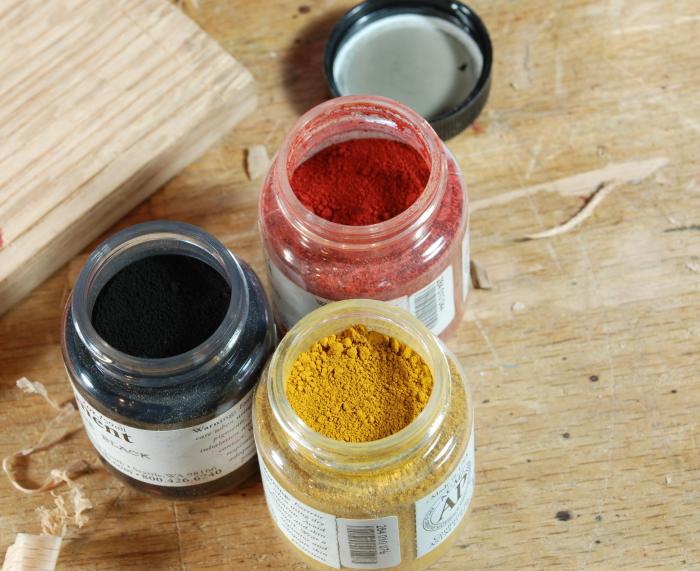One of the readers of the blog, James Rayner, sent me a link to a book of trades by Jan Luyken (1694). http://www.janluyken.com/index-en.htm
I know these engravings and the related drawings from a very nice exhibition catalog some years back called “The Butcher, the Baker, the Candlestick Maker: Jan Luyken’s Mirrors of 17th-Century Dutch Daily Life” by Donna Barnes (Hempstead, NY: Hofstra University, 1995). I think there’s 100 trades represented, maybe even a few more than that.
What I like about the catalog versus the website is that the drawings are featured in the book, versus the engravings on the site. The date of these works, 1694, means they coincide with the general transition between joiners and cabinetmakers as the prominent furniture tradesmen. The illustration of cabinetmakers in the set is so void of detail as to be next-to-worthless. The other woodworking trades fare better. Here’s the drawing for the chairmakers:

Way back when, my (then-not-yet) wife was in the Netherlands on vacation & I got this engraving upon her return:

Here’s a separate drawing for the turners:

It’s rare to find depictions of drawknife work, and here is a boom or mast-maker. Nice setup he has for holding long, whippy stuff for shaving.

I especially like the posture of the men in the carpenters’ illustration. The man in the background planing is quite convincing. Compare it to Jan Van Vliet from 60 years earlier.


But, the van Vliet engravings are worth having regardless. The Early American Industries Association published them in 1981. Harry Bober wrote a short piece on the engravings and van Vliet, and the prints were not bound, but issued in a portfolio. Worth hunting for if you collect images of tradesmen. But then you’ll need the Luyken book too. I looked tonight & it ranges from $37 to $600. I’d say skip it at $600, but get it for 50 or under.
There’s more of this sort of thing in an earlier post, https://pfollansbee.wordpress.com/2009/05/12/new-old-lathe/ as well as scattered throughout the blog…















































